How separate paddocks can improve gilt performance
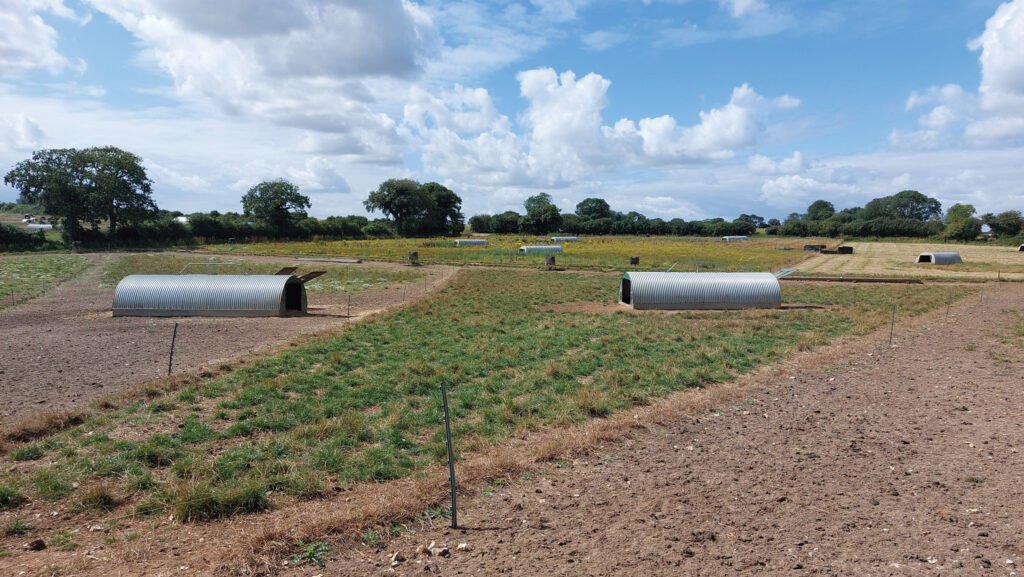 Gilt paddocks © MAG/Shirley Macmillan
Gilt paddocks © MAG/Shirley Macmillan Managing gilts and mature sows in separate paddocks has increased piglets a sow a year from 25.4 to 27.46 for Farmer Focus contributor Rob McGregor.
Gilts of a similar age and size kept together do not have to compete with older, heavier sows, and bullying has stopped.
While pleased with such success, Rob says it proves that things were not quite right before, so further progress will not be as great.
See also: Advice for selecting and managing gilts up to service
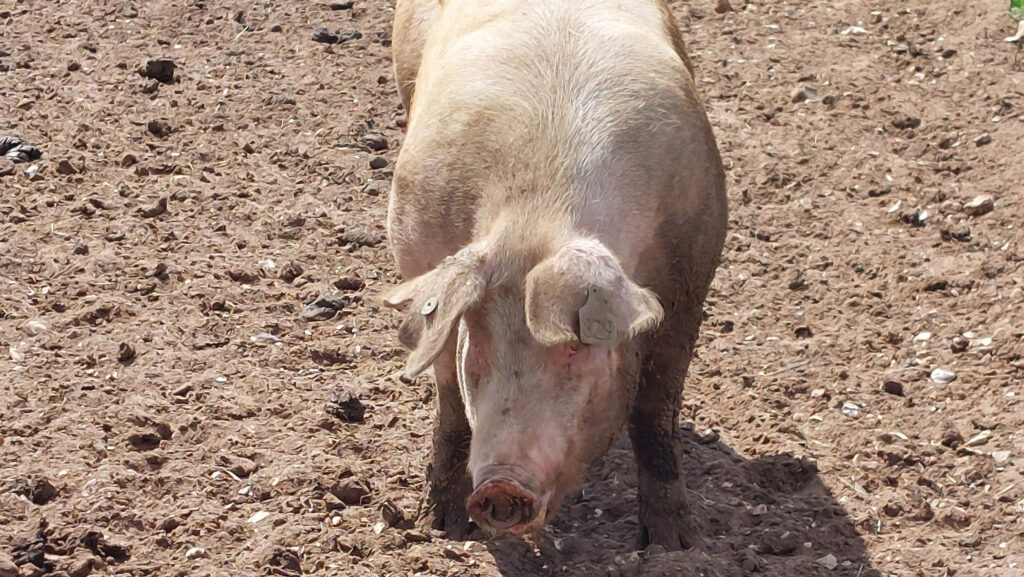
© MAG/Shirley Macmillan
“It may creep up a tad, and I’d be thrilled with 28 pigs across the whole herd.
“This is payback for the investment in extra paddocks and service areas – it seems extravagant, but our previous system wasn’t performing,” he says. (See “Herd performance from separate gilt paddocks”.)
Rob manages two outdoor herds – 550 sows and 900 sows – with six staff and three students, producing weaners under a contract agreement on rented land in Norfolk.
Pigs are part of a two-years-on, four-years-off rotation with barley and sugar beet.
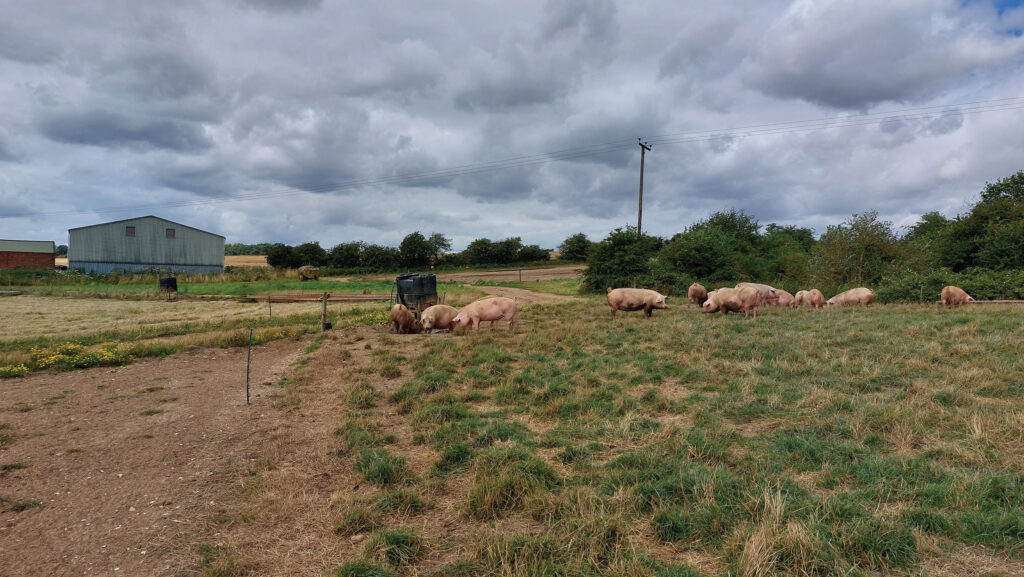
Pregnant gilts © MAG/Shirley Macmillan
Gilt replacement cost
AHDB’s GiltWatch project put the cost of rearing a replacement to first parity at £300-£350. In addition, a gilt does not repay this cost and start to generate a profit until her third parity.
As a contract manager, Rob does not bear all the rearing costs and does not know his full replacement cost, but says: “It is important not to lose them. Our replacement rate is 40-45% a year and every time we farrow, 20-22% of females are gilts.”
He culls sows after six litters – although says he likes to keep some good performers for a seventh parity – and they will weigh about 350kg.
He reasons that if his cull sows are selling at £1/kg, this would cover the cost of a replacement (based on AHDB figures).
However, this would not be the case when prices crash to as low as 30p/kg, so it is important to maximise herd life.
“Our biggest reason for culling is parity – then if sows lose condition, we see spine deformity and lameness issues,” he adds.
Second-parity drop is a concern and he was conscious of seeing small gilts grouped with very large mature sows, so he decided to try and separate facilities.
Rob breeds replacements for the two herds from a grandparent herd comprising 200 sows, selected for their maternal traits – born alive, maternal instinct and robustness – with sires adding carcass quality and growth rate to the next generation.
“We take 50-60 gilts from about 10 sows, so a lot of them are sisters and stay together – they know each other when they eventually join the herd,” he says, pointing out that this helps with socialising.
Gilt paddocks
The 550-sow herd was at 600 sows and operating two paddocks for one batch. This was based on sow size (large and medium) plus a separate gilt-and-small-sow paddock.
Rob reduced herd numbers and created four paddocks, with three for sows – large, medium and small – containing a mix of parities, and the fourth for gilts only.
He also set up an entire service and gestation radial for gilts in the 900-sow herd, but has no “before and after” data to monitor the effects.
Gilts are put into the growing radial at eight weeks on ad-lib feed, then move to floor feeding once a day and stay there for 12 weeks.
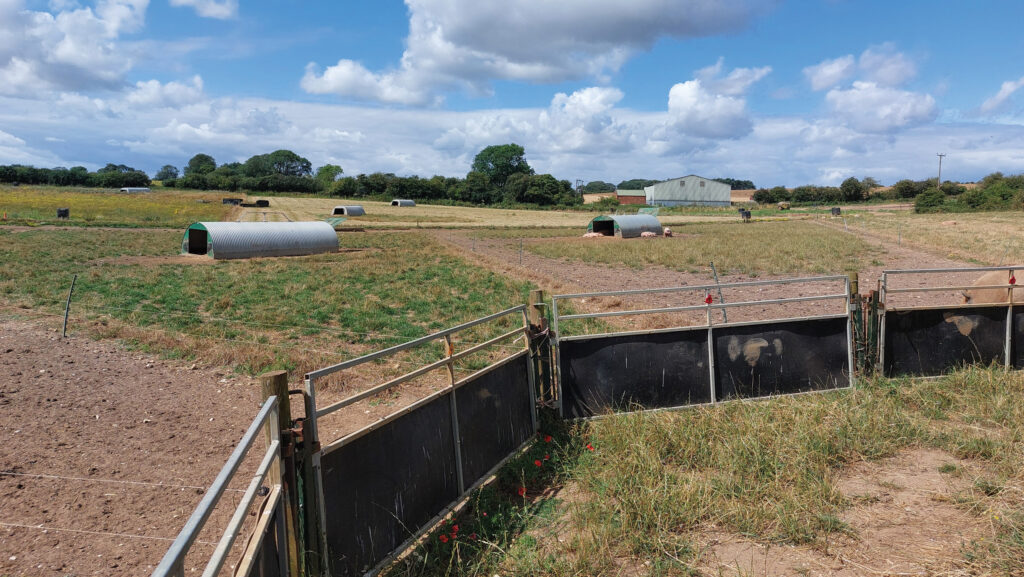
Gilt service gestation radial © MAG/Shirley Macmillan
“We tag and nose-ring them, then they go to the maiden gilt radial. We train them to go through gates and don’t weigh with scales, but weigh-tape at service,” Rob explains.
Gilts now stay on their own service and gestation radial, which makes management and observation easier for staff.
Each paddock holds 16-20 animals and service crates have been made slightly smaller. They could serve 10 gilts at a time, but only serve six to seven to keep the process quiet and stress-free.
“We also do a practice run in the handling setup so they get used to it before we serve them,” he adds.
In addition, Rob uses young, lighter boars for the gilts to sweep up after insemination, so they are a similar size.
“When they get to three to four years old, our boars can be up to 500kg and our mature sows weigh 250-300kg, but gilts are served at 130-140kg when they are 220-240 days of age.
“We now use boars that are one-and-a-half years old – weighing about 200kg – for about two years, and then they transfer to be used on sows.”
When they transfer to the farrowing paddocks, the gilts – like the sows – have their own 15x20m paddock and ark.
The average number of pigs weaned a litter is sitting at 12.2 across the whole herd, with weaning at five weeks. Overall stocking rate is 25 sows/ha (10 sows/acre).
Once a group of gilts is weaned, it moves on to the small sow service paddock, possibly with the addition of a few small or thin second-parity sows.
By this time, the gilts are larger, more confident and well socialised in their peer group.
Productivity gains
Rob’s next quest is to look at feed rates and timings to see if this can impact gilt growth rates and productivity.
He is conscious that they are still growing to mature weight while breeding and rearing pigs.
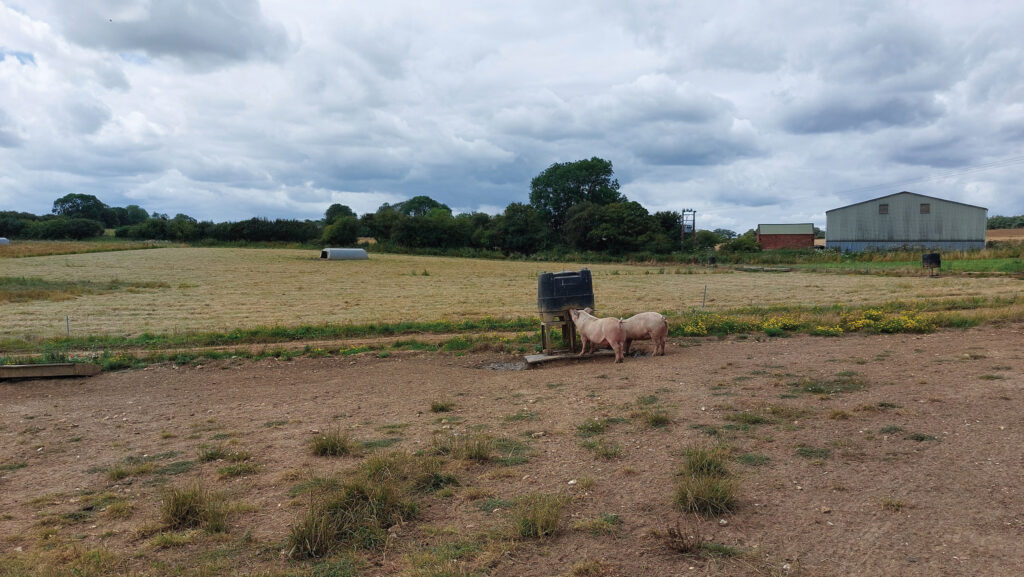
Access to water © MAG/Shirley Macmillan
Giving them more space to access feed and water without being bullied by older sows helps, but he is considering whether changing feed patterns and amounts will add further benefits.
The aim is to maintain body condition year-round, with winter feed rates (an extra 0.5kg a sow a day) introduced before the temperature drops.
An extra 1kg a sow a day is fed three weeks pre-farrowing, and he says this can be earlier to maintain an even body condition.
Concentrates are fed once a day and most is eaten at feed time, then sows return to the hopper for a top-up.
If the ration were available all the time, Rob thinks it would benefit growing gilts and avoid a second-parity drop.
Rob would advise other large herds to give separate gilt paddocks a try – it requires a minimum of 100 gilts for service to justify the input, and might be too complicated for smaller herds.
“You need at least 10 paddocks and preferably 16 on a radial to get funnelling for handling – square paddocks with a gate in the corner does not work. If you have the land, you can have surplus paddocks resting,” he says.
Herd performance from separate gilt paddocks |
||
|
KPI |
600 sows 12 months to December 2023 |
550 sows 12 months to August 2024 |
|
Farrowing % herd total |
81.02 |
86.5 |
|
Farrowing % gilts |
82.5 |
92.0 |
|
Pigs born alive a litter (herd) |
12.69 |
13.55 |
|
Pigs born alive a litter (gilts) |
11.8 |
12.17 |
|
Pigs weaned a litter (herd) |
11.6 |
12.1 |
|
Litters a sow a year |
2.19 |
2.27 |
|
Piglets a sow a year |
25.4 |
27.46 |
|
Average cull parity |
3.4 |
3.7 |
|
Source: Rob McGregor |
||
